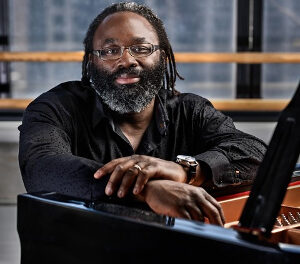It isn’t often that Tchaikovsky’s “1812 Overture” constitutes the weightiest work on a concert, but that was the case on the North Carolina Symphony‘s light-spirited program titled “Ceremonial Splendor,” heard in Wilmington and also presented in New Bern and Raleigh.
Led by the orchestra’s music director, Grant Llewellyn, the overture was treated to a tightly-built reading. The rich hymnal string opening was well-phrased; it was followed by dramatic and precise rhythmic playing, contrasted with luscious tone and lyricism. In a piece that can fall into the discursive, the transitions in this performance helped bind it together. Mr. Llewellyn was even able to make something of the endless repetitions in the string transition to the coda. The peroration was dramatic, though the simulated cannon shots were a bit too weak and synthetic to add much impact. Nonetheless, it added up to a rousing performance received with cheers from the audience.
This piece, which ended the concert, also provided its climax. The program, an engaging mixture of the familiar and the new, began with “Orb and Scepter” by William Walton, music first heard at the 1953 coronation of Britain’s Queen Elizabeth (the Queen still on the throne today). As noted by the conductor in his engaging spoken commentary, his own mother was actually present at that coronation. In this performance, the grandeur of the event and the sturdy pride of a nation came through well. The brass was showcased in royal fanfare, and played beautifully. Rhythmic music led to a broad second theme and a sweeping coda.
This was followed by more royal ceremony, the second suite from Handel’s Water Music. In this fairly brief group, there was more fine brass playing, and a nice touch in having the horns and trumpets played standing up. This made them visually the featured players of the performance. The fourth piece in the set, a slow dance, had an especially pleasing, lilting quality.
The first half ended with the second performance of a piece by Welsh composer Gareth Glyn: Enduring City: Portrait of New Bern; it had been given its world premiere the previous evening in New Bern. Much of the programmatic melodic material is derived from the names of people and places associated with the town, which is celebrating its 300th anniversary. The piece is built out of short sections portraying episodes in the history of New Bern. Colorful orchestration and an idiom reminiscent of a movie score characterize much of the work. The most gripping was the middle section, portraying war and lament. Intensive dissonance gave this section drama; it led to a part suggesting the beauty of nature, with wonderful playing from the winds. The work culminated in a grand ending. For this listener, the music was appealing but perhaps not likely to endure as long as the city it celebrates.
The second half began with “An Outdoor Overture” by Aaron Copland. This had the quintessential wide, bright Copland sound, alternating with lyrical sections. Here the orchestra’s winds excelled again; Mr. Llewellyn seems to have an affinity for that section of the orchestra. The following piece was “Sundays at Shackleford Banks.” The composer is Terry Mizesko, known among North Carolinians as a composer, conductor, and performer; he is also the bass trombonist of the North Carolina Symphony, where he has played for almost 40 years – this performance included. The piece is by turns a gently bucolic and light-hearted evocation of a childhood experience on a pristine barrier island near Morehead City. It allows the listener to bask in expansive melody. Not for tension or development, it evoked a pleasing calm, setting the stage for the weight and drama of the concluding Tchaikovsky.











